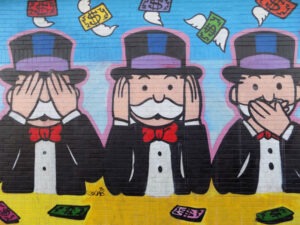
August 4, 2017; New Yorker
Though Black people are underrepresented in colleges, with 4.5 percent in college though they comprise 11 percent of the population, news leaked last week that the Department of Justice plans to “mount a legal challenge to affirmative action in university admissions.” The New Yorker’s Jelani Cobb recently wrote about the rise of white people as a disadvantaged class.
Cobb reminded us that the understanding of class for whites in the U.S. is not in absolute terms, but in relationship to Blacks. He wrote, “The question is not whether CEOs have salaries hundreds of times larger than their own but whether black people have salaries comparable to theirs.” This is why whites may see no irony in Trump, one of the richest people in the world, as the face of what Cobb calls the racial resentment agenda.
At risk of muddling this ideology with facts, Cobb traced “the forces that have ravaged the American working classes” to the end of the Cold War forty years ago and identified Obama’s “black presidency” as the landmark symbol of this backward slide. He wrote,
Thus, Barack Obama and Donald Trump don’t simply represent successive Presidencies; they personify rival genealogies of our current moment, warring claims to history. Where Obama built a movement to shake off the dead hand of history, Trump was hoping to reanimate that hand and clench it into a fist.
Sign up for our free newsletters
Subscribe to NPQ's newsletters to have our top stories delivered directly to your inbox.
By signing up, you agree to our privacy policy and terms of use, and to receive messages from NPQ and our partners.
Cobb cites the forthcoming attack on university affirmative action, the recent Senate bill to curb legal immigration, the border wall, and the overall frame of racial protectionism as a ploy to “socially engineer a world in which whites…once again have a deck stacked in their own favor.”
He identified the most recent challenge to affirmative action in higher education, Fisher v. University of Texas, which reached the Supreme Court in 2013, as coinciding with whites describing themselves in public opinion polls as “the most disadvantaged group in American society.”
The NAACP’s Legal Defense and Educational Fund’s director-counsel Sherrilyn Ifill pointed out that the DOJ is “attempting to use the resources of the executive branch to achieve what they have not been able to do at the Supreme Court.”
Nonprofits must be clear-eyed about this racial resentment agenda and deal with its own ambivalence about racial justice. Though nonprofits serve those who are disadvantaged by society’s status quo, it mirrors the status quo in its own predominantly white leadership and practices. In order to withstand this national attack on equity, the sector will be forced to address its complicity.—Cyndi Suarez













